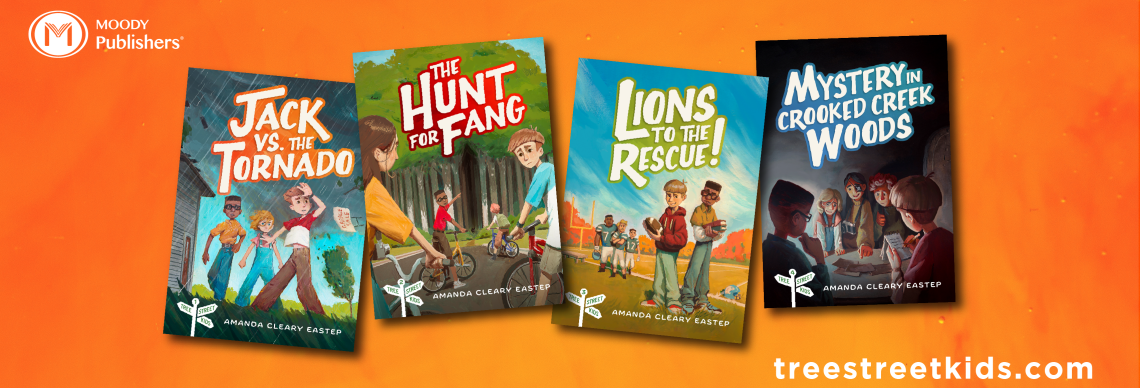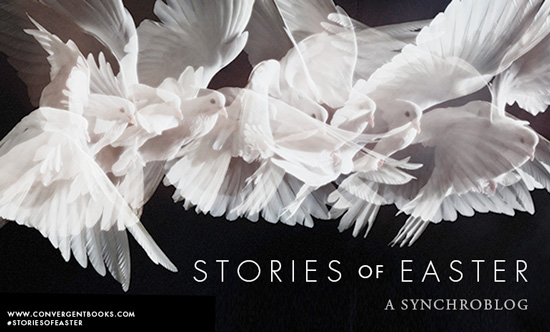By Amanda Cleary Eastep
They were Easter to me as a child.
Aunt Millie and Uncle Roy walked into our living room, childless but carrying two Easter baskets wrapped in pink and purple cellophane, the kind of baskets you bought at the store, not the ones you made yourself out of strawberry cartons.
Aunt Millie, bundled in a red dress coat with a mink collar, would kiss us on the lips with a big “mwah.” Uncle Roy, small and kind and with his good hat atop his Sunday-slicked hair, would hug us and cry “How’s my Pooper?”
My younger brother and I would tear down the cellophane to find jelly beans and wooden paddle ball games and “Easter”-themed coloring books with happy line drawings of the Easter bunny and decorated eggs.
One year there were no bright baskets. My uncle handed my brother a nearly life-sized (for a four-year old) brown stuffed rabbit. Into my arms, Aunt Millie laid a stuffed lamb.
My selfish little heart mourned the loss of fake green grass and hollow chocolate bunnies.
But the lamb was soft and white, with a pink ribbon around its neck, and I hugged it close, a bit sorry for its limp legs that wouldn’t allow it to stand on its own.
As a child, I didn’t realize the significance of that stuffed animal in relation to Easter–to the Lamb of God, the Lamb that was slain, the Lamb that takes away the sin of the world. Easter was simply pretty to me. Weirdly-colored eggs and pink cellophane and glowing, risen Jesus Sunday School lessons.
There were no coloring books with a man-god dying on a cross that I would have to color red.
No mourning Peter on his guilty knees.
No grieving mother of Jesus with her heart cried out onto the dirt floor of her “child”less house.
That lamb remained one of my favorite things throughout my childhood until life changed and toys were packed into boxes to make room for Fleetwood Mac albums and 70s unicorn collections.
Life changed, too, because I became old enough to see.
To see the grime of the industrial wire mills on the way to my aunt and uncle’s tiny bungalow on the East Side of Chicago.
To see my Aunt Millie feed everyone else’s children and families, always exclaiming “Mangia! Why you no eat?”
To see my Uncle Roy weeping in the kitchen, as my grandmother tried to convince him that if he didn’t stop drinking he would lose his job at the mill.
To see our desperate need to take the lamb into our arms.
To see the blood behind the pink cellophane.



Wow, that’s so funny! And cool. I’ll tell Jamie about that. She and I met at Columbia College in Chicago and have been friends since. I hope your husband’s work goes well. Blessings!
Happy to connect.
LikeLike
This is a really nice post. Interestingly, I, too, had a stuffed Lamby that I got from my cousin for Easter when I was six and didn’t stop sleeping with it until a few years after college… (I should probably not admit that.) But I cherish that Lamby and still have it in a box with some other special toys I’ll one day pass on. I never actually made the Easter connection with my Lamby until now… So thank you for that.
LikeLike
Hello, Pastor Emily, I appreciate your reading the blog and sharing your story. I didn’t make my lamb-Easter connection until I was halfway through writing the post! More important, it’s a blessing to connect with others through what we write, so thank you, too.
I enjoyed your post and will comment on it shortly. You might be interested in a book my friend and one of the other Easter bloggers just wrote…When Others Shuddered by Jamie Janosz. The book tells the stories of 8 heroic Christian women with connections to D.L. Moody (although he is not the focus of the book).
LikeLike
I agree. I love connecting with so many other thoughtful people this way.
Thanks so much for recommending this book! I just looked it up. It’s kind of crazy because my husband a Ph.D candidate at Garrett-Evangelical Theological Seminary and is writing his dissertation on women in the Holiness movement in the late 19th-20th centuries who started urban missions for the lower class and immigrant communities in Chicago. Amanda Berry Smith (one of the women in her book) is also one of the women he is featuring in his dissertation. SUCH a small world! I’ll have to let her know. And I already told my husband about the book… We will both be reading it soon. 🙂
It’s great connecting with you!
LikeLike